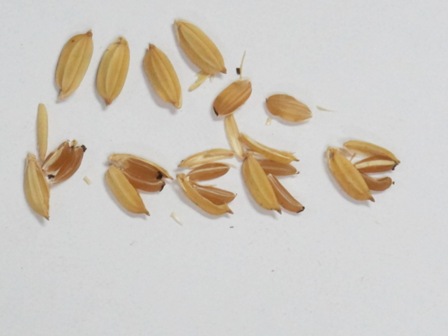Ruaraidh Sackville Hamilton of the IRRI genebank points out we are confusing clustered spikelets with multi-grained spikelets. Sorry.
Clustered spikelets are more common, and are recognized in the rice descriptors. We have 254 such varieties from 26 countries, mostly in S and SE Asia. Spikelets may be borne directly on the long primary branches of the panicle and/or on short secondary branches, in varying proportions. If none are directly on primary branches, or on the short secondary branches, they appear as clusters of three spikelets. See fig. 8 in the 2008 rice descriptors publication.
The multi-grained spikelets noted by Zakir are more unusual – multiple grains in single spikelets.
Old literature on developmental anatomy concludes that rice spikelets are primitively three-grained, of which the two lateral have become vestigial (hence “sterile lemma”). It would be interesting to know if the multi-grained spikelets are a reversion to primitive type, or a new splitting of the central grain.
